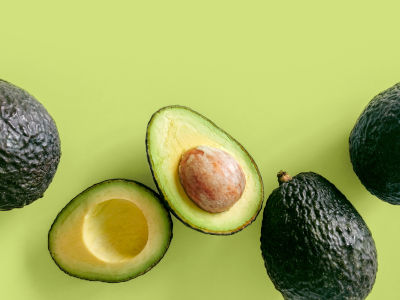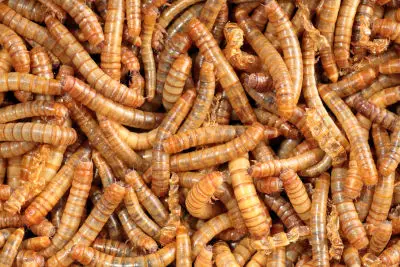What Causes a Lizard to Die: Understanding the Common Factors
Lizards are fascinating creatures that have been around for millions of years. They are known for their unique ability to adapt to different environments and their diverse range of physical characteristics. However, like all living beings, lizards are subject to the laws of nature and can die for a variety of reasons.
One of the most common causes of lizard death is disease. Just like humans, lizards can contract various illnesses that can be fatal if left untreated. Some common diseases that affect lizards include respiratory infections, metabolic bone disease, and parasitic infections. These diseases can be caused by a variety of factors, including poor diet, stress, and unsanitary living conditions.
| Are these foods dangerous for your Beardie? | |
| Avacado? Click here to learn, from this guide, if this food is dangerous |  |
| Superworms? Click here to learn, from this guide, if this food is dangerous |  |
Another common cause of lizard death is environmental factors. Lizards are ectothermic, which means that their body temperature is regulated by their environment. If the temperature is too hot or too cold, it can cause stress, dehydration, and even death. Other environmental factors that can cause lizard death include exposure to toxins, lack of food and water, and injuries from predators or other animals.
Natural Causes of Death

Gray concrete tomb stone on green grass field during daytime.
Lizards, like all other living organisms, eventually die. While some lizards may die due to human intervention or accidents, natural causes of death are also common among these reptiles. In this section, we will discuss the two most common natural causes of death in lizards: old age and disease.
Old Age
As with most animals, old age is a natural cause of death in lizards. As lizards age, their body systems begin to deteriorate, leading to a decline in overall health. This decline can result in a decreased ability to fight off infections and diseases, making the lizard more susceptible to illness. Additionally, older lizards may experience a decrease in mobility and appetite, which can further contribute to their decline.
Disease
Disease is another common cause of death in lizards. Lizards can contract a variety of diseases, including bacterial, viral, and fungal infections. These diseases can affect various body systems, including the respiratory, digestive, and nervous systems. Some common signs of illness in lizards include lethargy, loss of appetite, weight loss, and abnormal behavior.
It is important to note that disease can be prevented by maintaining proper hygiene and providing a healthy living environment for the lizard. This includes keeping the enclosure clean and free of feces and providing a balanced diet and appropriate temperature and humidity levels.
In conclusion, while there are many factors that can contribute to a lizard’s death, old age and disease are two of the most common natural causes. By providing proper care and attention to their pet lizards, owners can help prevent these natural causes of death and ensure their pet lives a long and healthy life.
Environmental Factors
Lizards are cold-blooded animals, and their body temperature is regulated by the environment. Therefore, environmental factors play a significant role in their survival. Here are some environmental factors that can cause a lizard to die.
Extreme Temperatures
Lizards are adapted to live in a specific temperature range. Extreme temperatures can cause stress, dehydration, and even death. For example, if the temperature drops below the lizard’s minimum temperature range, it can cause the lizard to become lethargic, and its metabolism will slow down. If the temperature drops even further, the lizard can become immobile and eventually die.
On the other hand, if the temperature rises above the maximum temperature range, the lizard will become dehydrated, and its body will start to shut down. The lizard will try to find shade, but if it cannot find any, it will eventually die.
Lack of Food or Water
Lizards need food and water to survive. If they cannot find enough food or water, they will become weak, and their body will start to shut down. For example, if a lizard lives in an area with a limited supply of insects, it may not be able to find enough food to survive. Similarly, if the lizard lives in an arid environment and cannot find water, it will become dehydrated and eventually die.
In conclusion, environmental factors such as extreme temperatures and lack of food or water can cause a lizard to die. It is important to provide a suitable environment for pet lizards and to ensure they have access to food and water.
Human Interaction
Human interaction can have a significant impact on the survival of lizards. The following sub-sections explore two main ways in which human interaction can lead to the death of lizards.
Pollution
Pollution can have a devastating effect on the health of lizards. Lizards can be exposed to pollution through the air, water, and soil. Air pollution can cause respiratory problems, while water pollution can lead to dehydration and poisoning. Soil pollution can also lead to poisoning and can affect the quality of the food that lizards eat.
Some common sources of pollution that can affect lizards include:
- Pesticides and herbicides
- Industrial waste
- Vehicle emissions
- Oil spills
Habitat Destruction
Habitat destruction is another major cause of lizard deaths. Human activities such as deforestation, urbanization, and agriculture can all destroy the natural habitats of lizards. This can lead to a loss of food sources, shelter, and breeding grounds.
When lizards lose their natural habitats, they are forced to move to new areas in search of food and shelter. This can put them in direct conflict with humans and other animals, which can lead to further deaths.
In conclusion, human interaction can have a significant impact on the survival of lizards. Pollution and habitat destruction are two main ways in which human activities can lead to the death of lizards. It is important to take steps to reduce pollution and protect the natural habitats of lizards to ensure their survival.